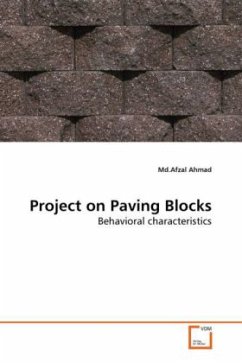The use of concrete block paving for roads began in Holland after the second World war; it originated as a substitute for brick paving, the traditional surface material which was unavailable due to coal shortages. The substitution became hugely successful - the roads of post-war Rotterdam were almost entirely constructed from concrete block paving and today there is more paving on the city''s roads than bituminous materials. The reason is partly aesthetic, partly due to greater durability, but also to the ability of paving to accommodate subsidence - a particular problem in Rotterdam. Concrete block paving was introduced to the UK in the 1970s; a favorable time as designers were then becoming aware of pedestrianisation and area :mprovement schemes. Its value as a surface material which combines great strength with an attractive appearance has been demonstrated over many years.
Bitte wählen Sie Ihr Anliegen aus.
Rechnungen
Retourenschein anfordern
Bestellstatus
Storno








